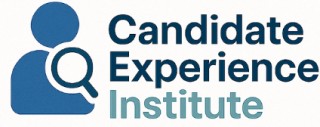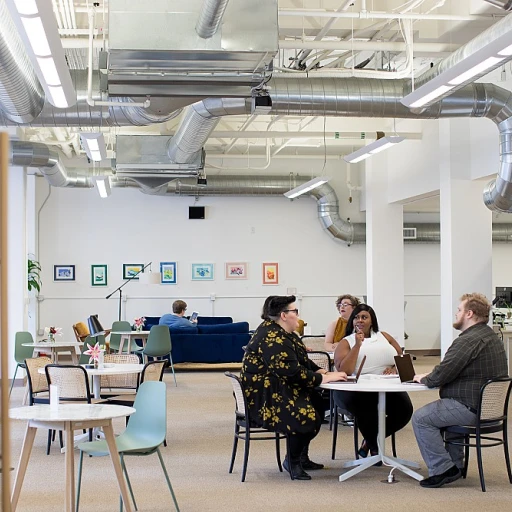
Understanding Ageism in the Workplace
Defining Age-Related Bias in Employment
Ageism in the workplace is an undercurrent of bias and discrimination that can impact both older and younger employees. While it is often subtle, its effects can be profound, leading to adverse impacts on career opportunities and employee wellbeing. Ageism manifests when individuals are treated unfavorably because of their age, with assumptions based on stereotypes about what workers of certain ages can or cannot do.
A pervasive issue with age discrimination is that it can happen at any stage of employment, from recruitment to retirement. Employers might unconsciously give preference to younger workers, assuming they have more exuberance or flexibility, while overlooking the wealth of experience that older candidates bring to the table. Similarly, younger employees might face bias based on perceived lack of experience or maturity, affecting their work advancement opportunities.
The challenge with ageism is its insidious nature. Unlike overt discrimination, age bias is often masked in seemingly innocuous remarks or policies. Roundabout ways of expressing skepticism about an older employee's ability to adapt to new technologies or a younger worker's readiness for leadership roles can be just as damaging.
It's important to acknowledge that ageism doesn't just affect individual workers but shapes the overall workplace environment. It hampers diversity, inclusion, and employee engagement, creating barriers to a collaborative and innovative company culture. In order to counteract age discrimination and foster a more equitable workplace, employers must actively work towards recognizing and addressing these biases.
In combating ageism, it's crucial to understand the employment law, which provides frameworks and protections against discrimination based on age. These laws are designed to ensure that all employees have equal opportunities, free from prejudice related to age.
Taking steps to create a fairer workplace involves implementing strategies to promote tolerance and diversity. By working towards age diversity inclusion, companies can not only improve employee morale and productivity but also enhance their competitive edge in their respective industries.
For those interested in learning more about overcoming discrimination and optimizing employee experiences, consider exploring the concept of how outplacement services work. These services can offer insights into supporting displaced employees, ensuring smoother transitions, and ultimately contributing to a more inclusive work environment.
Subtle Signs of Ageism During Recruitment
Identifying Discreet Forms of Discrimination
Subtle signs of ageism during recruitment are often hard to recognize, yet they permeate the hiring process and negatively impact both older and younger employees. As companies strive for diversity inclusion, understanding these signs is critical. A common example of age discrimination is the usage of coded language in job postings. Terms such as "young and energetic" or "digital native" might inadvertently deter older employees from applying.
During the interview process, older workers might be asked questions about their ability to "keep up" with younger employees. This can be a form of age bias in disguise, placing unnecessary doubt on an older candidate's capabilities. Similarly, younger workers may face discrimination based on assumptions about their lack of experience or reliability.
Moreover, employer decisions based solely on age stereotypes can limit opportunities for all employees. For older workers, this might manifest as lower salaries or fewer chances for career advancement. For younger employees, it might mean facing additional scrutiny in responsibility-laden roles.
Understanding these discreet yet discriminatory practices is vital not just for HR professionals, but for everyone involved in the hiring process. Employers can consult resources on avoiding navigating the role of an account coordinator in a discriminatory-free manner, ensuring a fair evaluation process.
Impact of Ageism on Employee Morale and Productivity
How Ageism Affects Workplace Dynamics
Ageism in the workplace can have a profound impact on both employee morale and productivity. When older employees face age discrimination, it often leads to a decrease in job satisfaction and engagement. This can manifest in various ways, such as feeling undervalued or excluded from opportunities that are readily available to younger workers.
For instance, older workers might be overlooked for promotions or professional development opportunities, which can lead to a sense of stagnation in their careers. This not only affects their personal growth but also the overall productivity of the company. When employees feel that their contributions are not recognized due to age bias, their motivation to excel diminishes, impacting the company’s bottom line.
The Ripple Effect on Younger Employees
Interestingly, ageism doesn’t just affect older employees. Younger employees can also feel the repercussions of a workplace culture that tolerates age discrimination. When a company exhibits age bias, it sends a message that age is a determining factor in employment decisions, which can create a culture of fear and uncertainty among younger workers as well. They might worry about their own future as they age within the company.
Creating a Culture of Inclusion
To combat these issues, companies need to foster a culture of diversity and inclusion. Employers should ensure that all employees, regardless of age, have equal access to opportunities and are evaluated based on their skills and contributions rather than their age. Implementing policies that promote age diversity can enhance employee engagement and productivity across the board.
For more insights on how to evaluate the value of job fairs for candidates, which can be a step towards creating a more inclusive hiring process, visit this resource.
Legal Framework and Protections Against Ageism
Legal Protections Against Age Discrimination
Understanding and navigating the legal landscape is crucial for both employees seeking justice and employers aiming to foster a fair environment. Employment law offers considerable protection against age bias, ensuring that older employees can work without fear of discrimination. The Age Discrimination in Employment Act (ADEA) is a key law that prohibits discrimination against people aged 40 and older, safeguarding their rights in the workplace. Numerous case studies highlight how ageism can manifest in the workplace and the legal implications that follow. For instance, if a company consistently promotes younger employees over equally or more qualified older workers, this can be an example of discrimination based on age. Such discrimination is not just ethically problematic but can also lead to significant legal repercussions for employers. One notable aspect of these legal standards is that they require companies to provide equal opportunities regardless of age. Employers must ensure that their advertising, recruitment, and advancement processes are free from any form of age bias. This means that job descriptions and other employment materials should be carefully reviewed to avoid inadvertently excluding older workers or favoring younger employees. Additionally, documentation and policies within a company should clearly reflect their commitment to diversity inclusion, explicitly stating their stance against ageism. Companies can also benefit from regular training sessions about discrimination in the workplace, educating staff about the signs of age discrimination and the impact it has on employee morale and productivity. Laws alone, however, are not sufficient to eradicate discrimination. Creating a workplace environment that supports and respects workers of all ages requires persistent effort and conscious policy implementation. Employers who make this effort are not only legally compliant but also demonstrate their commitment to a diverse and inclusive workplace.Strategies for Creating an Inclusive Workplace
Building a Culture of Inclusivity and Diversity
Creating an inclusive workplace where age discrimination is non-existent requires deliberate actions. To achieve this, it's important for employers to foster a culture that values diversity, including age diversity. Here are some strategies that can help your company become more inclusive and welcoming to employees of all ages:- Promote a Culture of Respect and Engagement: Encourage employees to share their experiences and ideas, regardless of age. Respectful and open communication can help break down age-based stereotypes, allowing younger and older employees to work harmoniously.
- Implement Age-Inclusive Policies: Ensure company policies support diverse hiring and career advancement opportunities for all employees. This includes reviewing and adjusting job descriptions and recruitment strategies to eliminate potential age bias.
- Offer Continuous Development and Training: Providing learning and growth opportunities for workers at different stages of their career helps keep them engaged and demonstrates your commitment to valuing each employee's contribution.
- Encourage Mixed Age Teams: Foster collaboration by creating teams that include both younger and older workers. This promotes mentorship and knowledge sharing, benefiting both personal growth and the company's objectives.
- Recognize and Challenge Age Bias: Training programs should address unconscious biases and their impact on the workplace. Regular workshops on diversity inclusion can help change the narrative and perception of age diversity positively.
Real-Life Stories of Ageism and Overcoming Challenges
Stories of Triumph Over Ageism
While discussing the issue of ageism in the workplace, real-life experiences shed light on the challenges and triumphs many have faced. Several older employees have shared stories indicating how age discrimination made their work environment difficult. However, these examples also highlight the resilience and determination of those who encountered age bias at work.
There are documented cases where older workers were unfairly passed over for advancement opportunities, as younger employees were given preference. This not only affects individual morale but can also hinder the diversity inclusion efforts within a company. One notable example of ageism is when experienced workers are sidelined for tasks requiring fresh perspectives, without considering their ability to contribute innovative ideas despite their age.
In certain organizations, older employees experience discrimination based on age, manifesting in subtle signs like lack of adequate training. For instance, some employers may assume that senior workers are less adaptable to new technologies, further alienating them from younger colleagues. Such assumptions contribute significantly to the negative impact of age discrimination in the workplace.
On a more positive note, there are inspiring stories of older employees who have taken legal action against discriminatory practices, thereby setting crucial precedents in employment law. These actions not only addressed their personal grievances but also paved the way for better protections under the law for future employees facing similar challenges due to age discrimination.
Moreover, organizations are increasingly recognizing the value of age diversity and are implementing strategies to foster inclusion. By actively challenging age stereotypes, providing inclusive training programs, and promoting a culture where older and younger workers can collaborate effectively, companies can combat discrimination and enhance employee engagement.
These real-world stories serve as a reminder of the obstacles older employees encounter, yet equally highlight what can be achieved when companies commit to mitigating ageism in the workplace.













